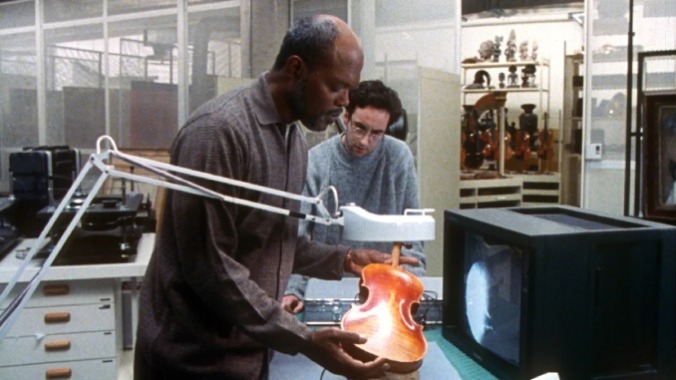The Red Violin at 25: The Magic in Musical Instruments Lives On

Ah, the Red Mendelssohn, one of history’s greatest musical instruments. The Stradivarius violin, crafted in 1720, is still played to this day by American classical violinist Elizabeth Pitcairn. News to you? Well, to be honest, I never would have known of the revered violin if it wasn’t for writer/director François Girard’s 1999 film The Red Violin.
While I adore music, I can’t play a note of it. So I remain an unabashed admirer of those who can pluck notes from their chosen instrument and make their magic. Some of my deeper respect for those who can goes back to when I first saw The Red Violin 25 years ago. I’d never seen a film before that so effectively imbued the swelling emotions of its player into the instrument itself. In telling the stories of its maker through to its most recent owner, The Red Violin beautifully conveys how every player’s successes, failures or tragedies become imprinted within its wood, a phantom tapestry that forevermore influences the music played on it.
If you’ve never heard of the movie, though, I’m not surprised. The Red Violin belongs in that distinct category of ‘90s indies that got heavy rotation on cable lineups, or were home video rental discoveries that you picked up because Samuel L. Jackson was on the cover. (Yes, Samuel L. is in this violin movie). To this day, The Red Violin remains one of those rare films that not only still lives rent-free in my brain, but one that defined—to this musically disinclined person—the depth of story and importance that a modest instrument can possess outside of the mere sound that it makes.
Envisioned as a sprawling period piece, Girard and co-writer Don McKellar were inspired to turn their fictional version of the Red Mendelssohn into the central character of The Red Violin. After their success with 1992’s Thirty Two Short Films About Glenn Gould, the pair continued to refine their multi-perspective historical approach, revealing a subject through the stories told about it.
-

-

-

-

-

-

-

-

-

-

-

-

-

-

-

-

-

-

-

-

-

-

-

-

-

-

-

-

-

-

-

-

-

-

-

-

-

-

-

-








































